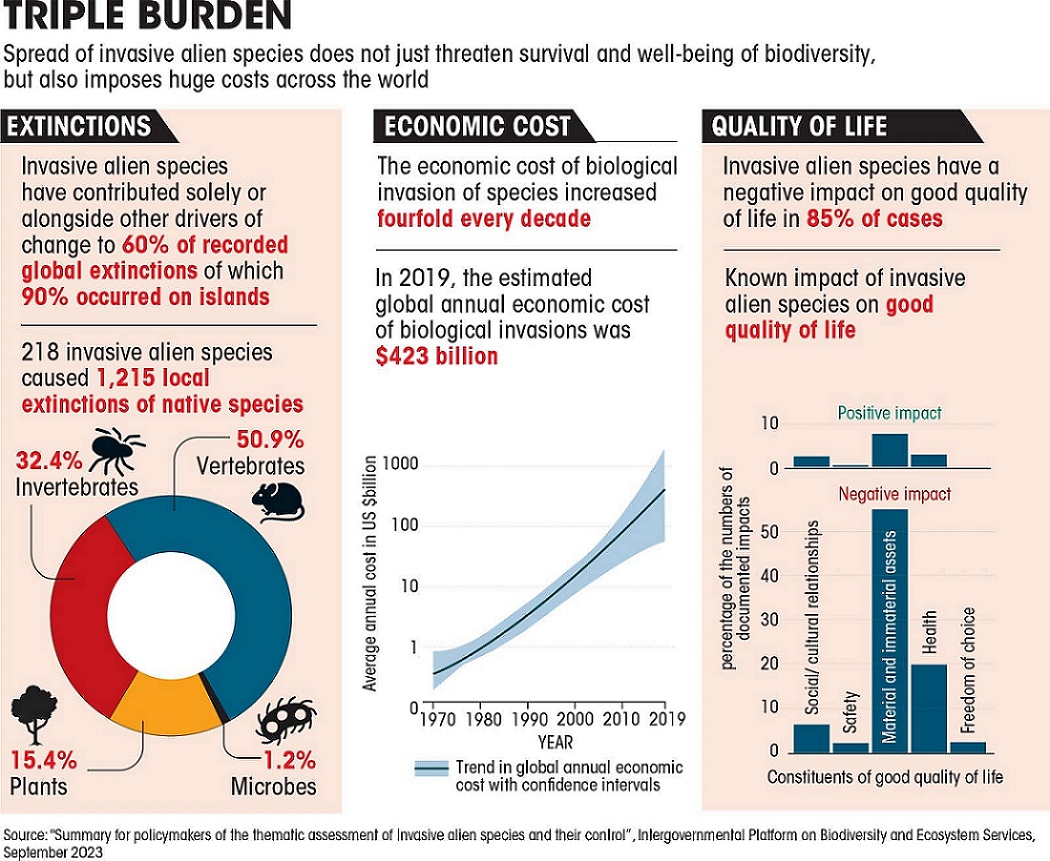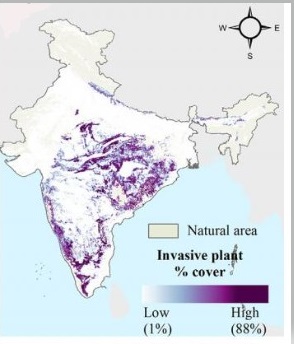7667766266
enquiry@shankarias.in
India, with its largest land area in the group of seven countries in South Asia, tops the list with 185 invasive alien plants.
|
Status of invasive plant species |
|
Not all non-native species are invasive.
A 2017 study found that over one third of all introductions in the past 200 years occurred after 1970

The estimated global cost of invasive species was 423 billion dollars with costs increasing fourfold every decade since 1970.
